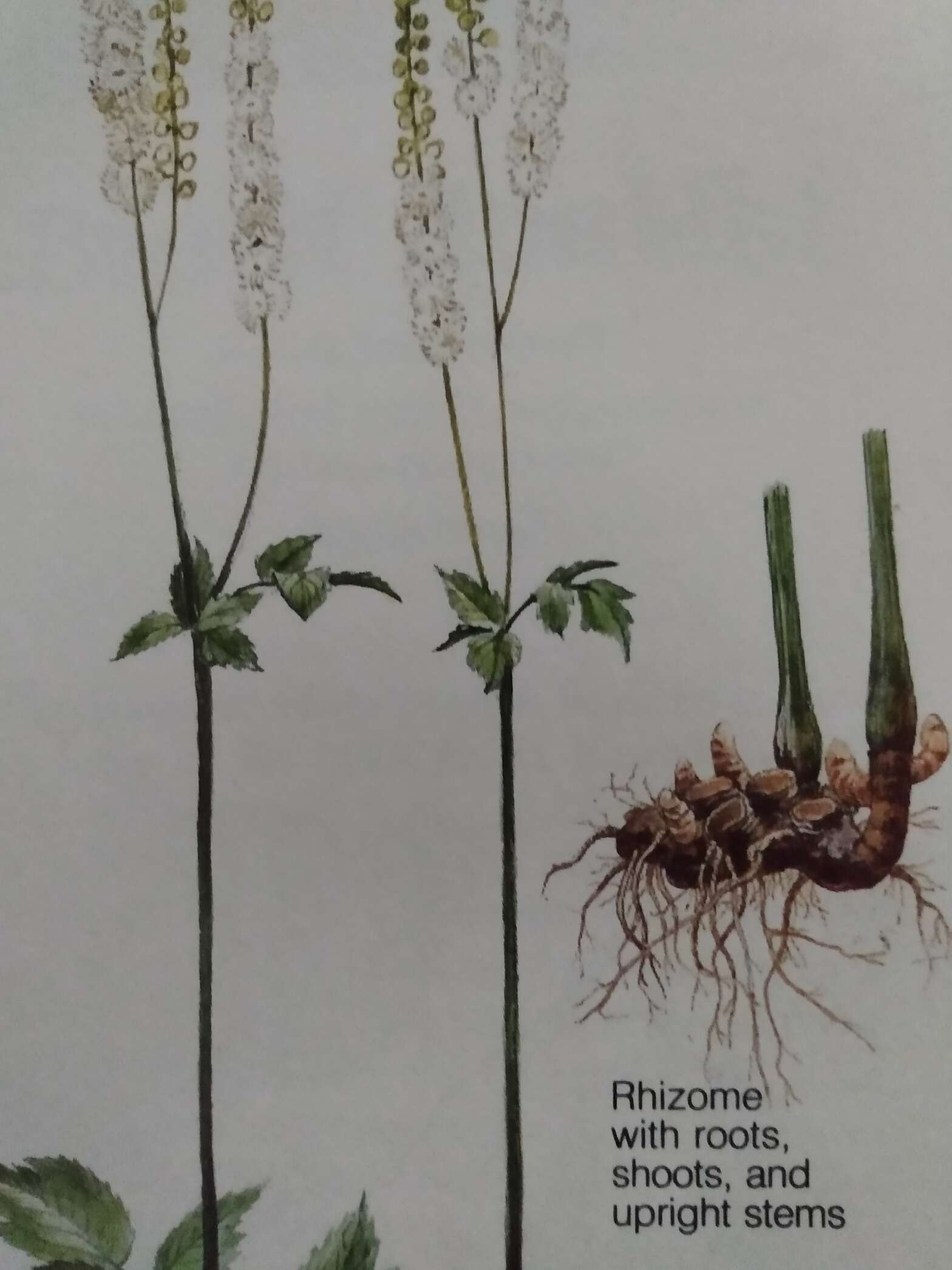Black Cohosh benefits, among other names it goes by, such as “Black Snakeroot” “Bugbane” “Squawroot” and it is in the “Buttercup Family”
Black Cohosh and Native American Indian History of Uses
The Black Cohosh hard knotty rootstock is the more significant part of this Native American plant. This root has been used for a wide variety of medicinal purposes. Indian remedy use for menstrual cramps and the pain of childbirth, as a brew. Therefore, this is where the name “Squawroot” correlates to this plant. American Indians also used a poultice made from the rhizome as a “snakebit remedy. Black Cohosh has a strong odor and can be used as an insect repellent.
Black Cohosh Habitate:
- Open woods
- Edge of dense Woods
- Cleared hillshides
- Grows from ontario South to Georgia and Tennesee, Massachuetts and west to Missouri
Identification:
A stately perennial, 3-8 feet tall. Topped by a long plume of white flowers (June-September) The leaves are large and pinnately compound; the leaflets are irregular shaped with toothed edges. With its prominent white flowers, and referring to its name “Black” is often a point of confusion. The “black” point refers to the dark color of the rhizome.
Black Cohosh Benefits:
A tincture used in the 19th century made from the rhizome was found helpful for treating rheumatism. Laboratory experiments suggest that extracts of the rhizome have an anti-inflammatory effect and its use in the treatment of neuralgia and rheumatism. Its primary use of Black Cohosh has been as a relaxant, sedative, ad antispasmodic.
Black Cohosh Menapause:
Research of today’s pharmaceutical Black Cohosh is commonly used for menopausal symptoms, such as.
- Hot flashes
- Night sweats
- Loss of elasticity and moisture in the valva and vaginal tissue
- Heart palpitations
- Decreased sex drive or motivation
- Tinnitus
- Vertigo
- Sleep distubances
- Reduced mental performance postmenopausal women
- Nervousness and irritability
- Heart disease in post menopausal women
The American Herbal Products Association recommends that pregnant women should avoid Black Cohosh except under the supervision of their health care provider.
Black Cohosh with Estrogen and Hormone Therapies:
Individuals on estrogen or hormone therapies may not be able to safely take black cohosh. Here are some factors that may increase adverse reactions.
- Seizure disorders
- Liver disease
- Conditions that involve blood clots
- Blood pressure medications to ower it
- Extrogen medication/hormone replacemet therapies
- Blood thinnr medications/Antiplatelet medications
- Nonsteroidal anti-inflammatory medications
- Alchol Use
Other Medications That May Increase Risk of Complication with Black Cohosh
- Depression/mood medications
- Antihistamines
- Cancer medications
- Liver medications
- Osteoporosis and arthrities medications
Natural Supplements to Advoid While Taking Black Cohosh:
- Blue Cohosh
- Ginko Biloba
- Garlic
- Chaste-tree berries
- Evening promrose oil
- Pennytoyal
- Willow bark
- St. Johns Wart
Black Cohosh Dosage:
Studies recommend taking 40-200 milligrams (mg) of the Herbin dry form. Individual doses are taken throughout the day. High doses should be spread out into three doses per day
- Postmenopausal breast cancer. One to four 2.5 mg tablets daily for six month period. Taking with Tamoxify or 20 mg daily for one year.
- Postmenopausal heart disease 40 mg daily for three months, stipped, then taken for another 3 months.
- Mental performance in postmenapausal women 128 mg daily for one year.
- Bone density in postmenopausal women 40mg daily for three months.
Large Doses Cause Ill Symptoms
As with any natural herbs and medications to much, or large doses of Black Cohosh cause symptoms of poisoning. Particularly nausea, and dizziness, and provoke misscarriage.
Black Cohash Tea:
For less easily absorbed forms such as powders or teas, 1-2 gram (g) doses are recommended three times a day.
Allergic Reaction:
As with anything, some individuals may experience an allergic reaction to Black Cohosh. People with aspirin intolerance or allergies should avoid it. The herb contains small levels of salicylic acid, which is the active component in aspirin.
Resource:
Medicinal Plants and Flowers Used Through The Ages https://1111newme.com/2021/08/14/medicinal-plants-flowers-used-through-the-ages/

